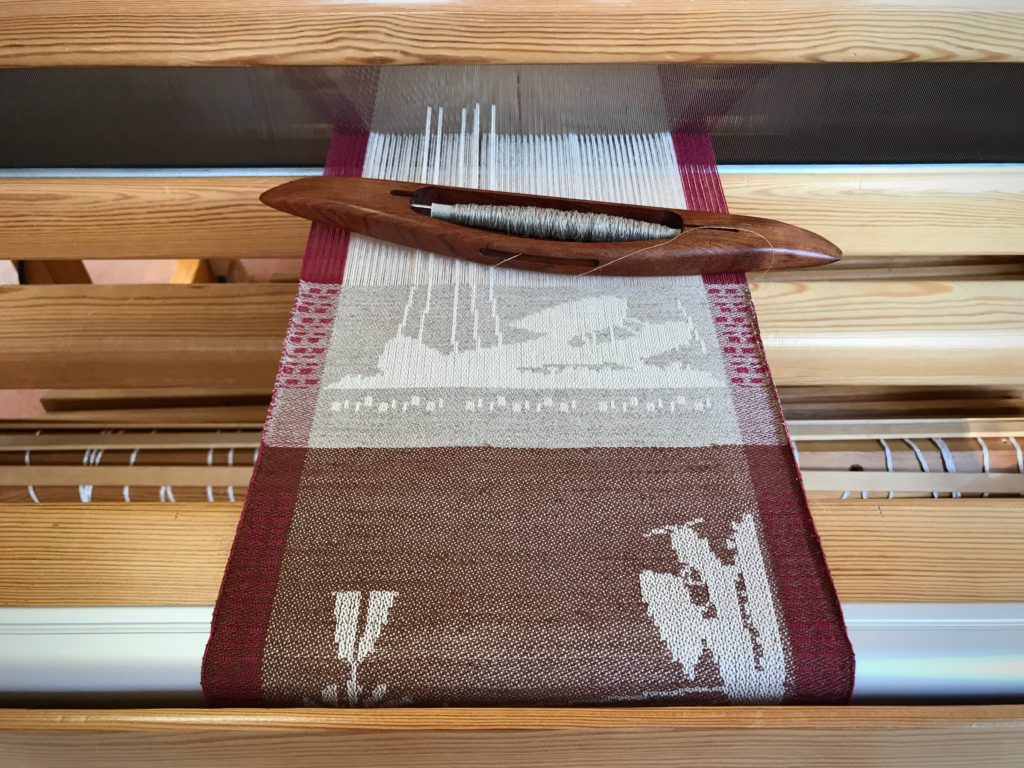The contours of the face are more evident now that the lips are in place. Every cartoon line requires decisions. Shift the color at this warp end?…or, one over? Does this butterfly have too much pink?…maybe it needs more pink? The portrait image happens almost invisibly, thread by thread.



I step back often so I can see what I am weaving. Up close, the details are obscure. I step up on the loom bench (very carefully, holding on to the top of the loom) and look through the back end of my binoculars. A distant view of the tapestry comes into focus. It’s encouraging! I can clearly see that the details are working out.


We may be too close to our own circumstances to see the details clearly. We make decision after decision, and we hope against hope that things will turn out okay. How can we know what is right? Step away to pray. Slip away with the Lord Jesus to get His view on things. Only when we consult a higher view can we see the bigger tapestry that the Grand Weaver is creating. Prayer, as a conversation with the Lord, helps us see that the details are working out according to his purpose.
May your details become clear.
With purpose,
Karen













